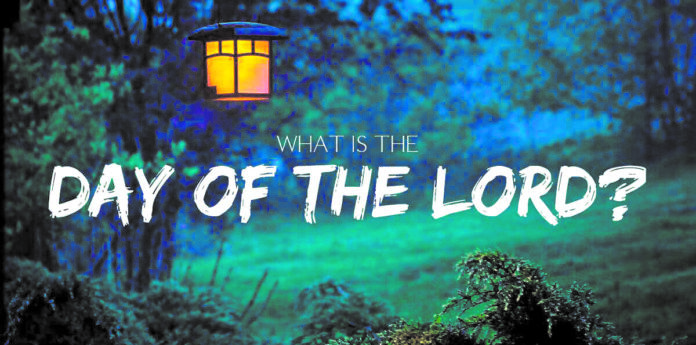I was just thinking about things I have read recently. An article by a preacher of another denomination stated that the Lord’s Day and the Day of the Lord are one in the same. However, that is not what Scripture states.
I wrote in a previous column (see the Sept. 28 issue) about the Hearsay of Heresy. While that pastor is mistaken, he is not necessarily heretical. Still, I think we should be accurate when relating subjects of God’s Word to God’s people.
The Lord’s Day — A Day of Worship
The Sabbath (seventh) Day was designed by God for humans to relieve their burdens and rest, according to Mark 2:7. To the Hebrews, it was a day of worship, but when Jesus arose on the first day of the week, Christians began to worship on the first day of the week, which is Sunday. John, when given the Revelation, said he was in the Spirit on the Lord’s Day.
That was when he was given a view of the future — the last days which would include a vision of the Day of the Lord. It was fitting for him to be called upon to write such things on a day of worship as he would learn about what his Lord has in store for mankind.
Peter wrote, “But the Day of the Lord will come like a thief (in the night). The heavens will disappear with a roar; the elements will be destroyed by fire, and the earth and everything in it will be laid bare” (II Peter 3:10 NIV).
The Day of the Lord — A Day of Wrath
John was not in the Spirit on the Day of Wrath, but he was on the day of worship.
Some believe the things revealed in the Book of Revelation are not literal, but symbolic. I think since Peter wrote much the same about the Day of the Lord, it would be foolish to say that when Revelation was written the literal became symbolic. Note what others, by inspiration, wrote:
• The Prophet Joel: “I will show wonders in the heavens and on the earth, blood and fire and billows of smoke. The sun will be turned to darkness and the moon to blood before the coming of the great and dreadful day of the Lord” (Joel 2:30-31).
• The Prophet Zephaniah: “Neither will their silver nor their gold be able to save them on the day of the Lord’s wrath, in the fire of his jealousy the whole world will be consumed, for he will make a sudden end to all who live in the earth” (Zeph. 1:18).
• John the Revelator: “They called to the mountains and rock, ‘Fall on us and hide us from the face of him who sits on the throne and from the wrath of the Lamb! For the great day of their wrath has come and who can withhold it?’” (Rev. 6:16-17).
The Day of the Lord — A Day of Darkness
The idea of a “symbolic” Day of the Lord is manipulating the Word of God. One of the truths I have taught for most of my 58 years of ministry is for believers to look for continuity in the Scriptures. If something is mentioned only one time, one might debate its meaning. However, if a subject is mentioned or well described again and again, from Old Testament to New Testament, it is evident that God wants us to pay close attention. The prophet Amos also verified what the Day of the Lord would be like — a day of darkness: “Woe to you who long for the day of the Lord! Why do you long for the day of the Lord? That day will be darkness, not light. It will be as though a man fled from a lion only to meet a bear as he entered his house and rested his hand on the wall only to have a snake bite him. Will not the day of the Lord be darkness, not light — pitch-dark, without a ray of brightness?” (Amos 5:18-20).
The Conqueror on the Day of the Lord — The Returning King of Kings
“I saw heaven standing open and there before me was a white horse, whose rider is called Faithful and True. With justice he judges and makes war. He eyes are like blazing fire, and on his head are many crowns. He has a name written on him that no one knows but he himself. He is dressed in a robe dipped in blood, and his name is the Word of God. The armies of heaven were following him, riding on white horses and dressed in fine linen white and clean. Coming out of his mouth is a sharp sword with which to strike down the nations. He will rule them with an iron scepter. He treads out the winepress of the fury of the wrath of God Almighty. On his robe and on his thigh he has this name written: King of Kings and Lord of Lords” (Rev. 19:11-16).
This Lord’s Day, please worship Him who has saved you by His grace, bought by the blood of Christ and has provided for you a rescue — an escape — from the coming Day of the Lord.



